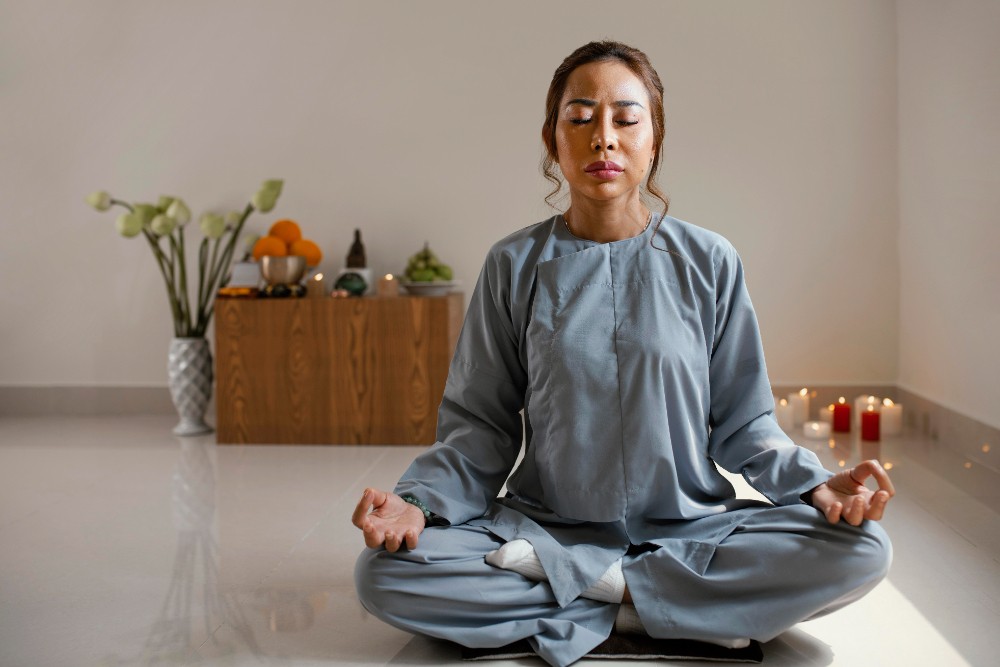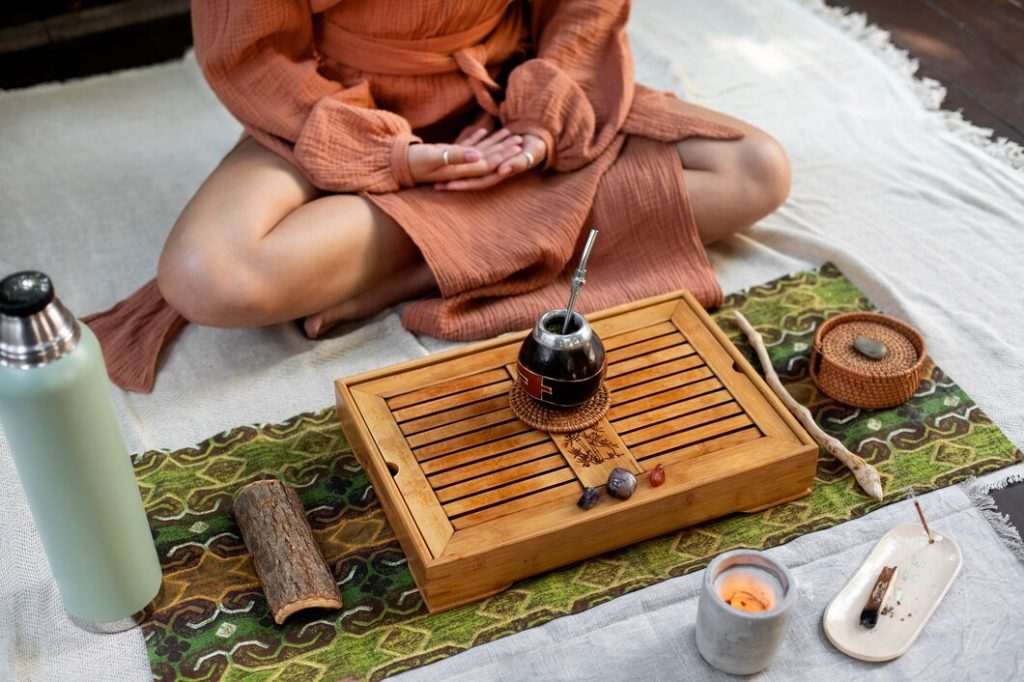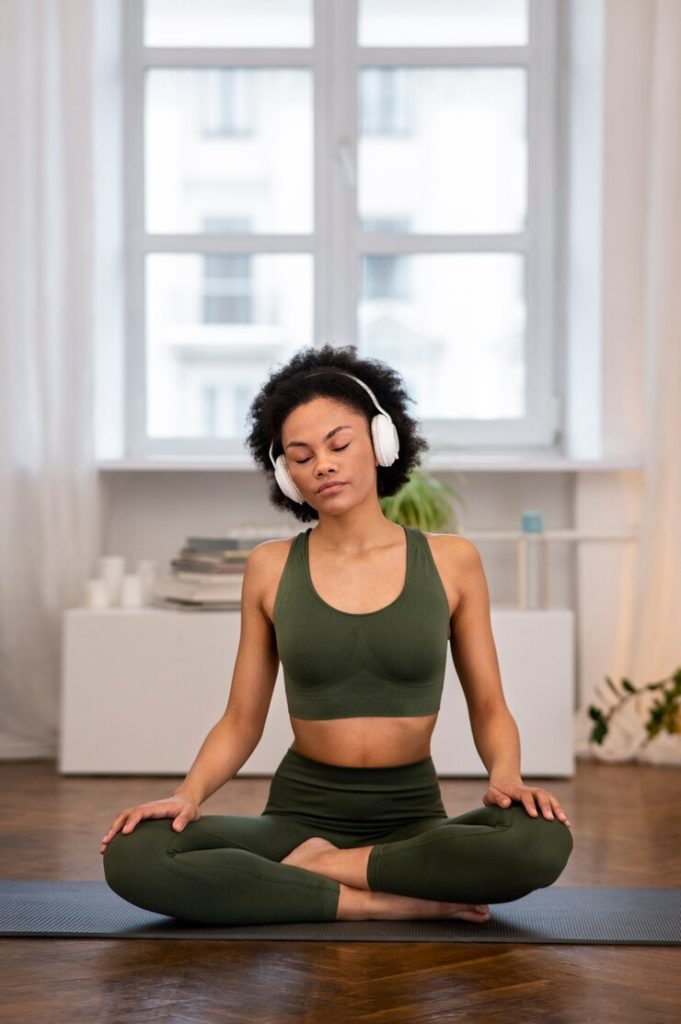Bedwetting, or nocturnal enuresis, is common in children, especially those under six years old. It can be classified as primary (when a child has never been consistently dry at night) or secondary (when a child who has been dry for at least six months starts wetting the bed again).
Symptoms
- Involuntary urination during sleep: Typically occurs during the night and may happen several times a week.
- Difficulty waking up: Children who wet the bed often sleep very deeply and may not wake up even when their bladder is full.
- Associated with daytime symptoms (in some cases): Such as urgency, frequency, or daytime wetting, which might indicate an underlying bladder issue.
- Emotional distress: Older children may feel embarrassed or anxious about bedwetting, especially if it affects social activities like sleepovers.
Management
- Reassurance: Bedwetting is a normal part of childhood development and usually resolves on its own. Parents should be patient and supportive.
- Behavioral Interventions:
- Limit fluid intake: Reduce the amount of liquid your child drinks in the evening, especially caffeinated or sugary drinks.
- Scheduled bathroom trips: Encourage your child to use the bathroom before bed and, if possible, wake them up for a bathroom trip during the night.
- Bedwetting alarms: These devices detect moisture and sound an alarm to wake the child. Over time, this helps the child learn to wake up when they need to urinate.
- Positive reinforcement: Rewarding dry nights can be a positive motivator, though it’s important not to punish or shame the child for wetting.
- Medical Interventions:
- Desmopressin: This medication reduces urine production during the night and can be helpful in certain cases, especially for special occasions.
- Anticholinergics: These medications may be used if there is an overactive bladder component.
- Investigate underlying causes: If bedwetting is secondary, or associated with other symptoms, it may be necessary to check for conditions like urinary tract infections, constipation, or diabetes.
- Lifestyle Modifications:
- Regular bowel movements: Constipation can contribute to bedwetting, so managing this is important.
- Avoiding bladder irritants: Caffeine, chocolate, and certain foods can irritate the bladder, so it’s best to avoid them in the evening.
- Counseling and Support:
- Psychological support: If bedwetting is causing significant emotional distress, talking to a counselor or therapist can be beneficial.
- Parental support: Educating parents on the normalcy of bedwetting and the importance of a non-punitive approach is key.
When to See a Doctor ?
- If the child is older than seven and still bedwetting regularly.
- If bedwetting starts suddenly after a period of dryness.
- If there are accompanying symptoms like pain during urination, excessive thirst, or daytime wetting.
With patience, understanding, and appropriate management, most children outgrow bedwetting without lasting issues.
Prevention and Care taken for Bedwetting Children
Preventing and managing bedwetting in children involves a combination of practical steps, supportive care, and positive reinforcement. Here’s how parents can help their child through this phase:
Prevention Strategies:
- Fluid Management:
- Limit evening fluids: Encourage your child to drink more fluids earlier in the day and reduce their intake in the evening, especially an hour or two before bed.
- Avoid bladder irritants: Limit or avoid drinks that can irritate the bladder, such as caffeinated beverages (tea, soda) and acidic juices (orange juice).
- Regular Bathroom Routine:
- Pre-bedtime bathroom visit: Ensure your child uses the bathroom right before going to bed, even if they don’t feel the need to.
- Scheduled wake-ups: For children who are heavy sleepers, consider waking them up once during the night to use the bathroom.
- Establish a Routine:
- Consistent sleep schedule: A regular bedtime routine can help promote good sleep hygiene and bladder control.
- Daytime bathroom habits: Encourage regular bathroom breaks during the day to prevent an overfull bladder at night.
- Promote a Healthy Bladder:
- Avoid constipation: Constipation can put pressure on the bladder, so ensure your child is eating a fiber-rich diet and staying hydrated during the day.
- Physical activity: Encourage regular exercise, which can help regulate bodily functions, including bladder control.
Care for Bedwetting Children:
- Emotional Support:
- Stay positive: Reinforce that bedwetting is a common issue and not the child’s fault. Avoid punishment or expressing frustration.
- Encourage self-care: If age-appropriate, involve the child in cleaning up after an accident to foster responsibility without shame.
- Emotional Support:
- Use of Protective Measures:
- Waterproof bedding: Use waterproof mattress covers and absorbent bed pads to make clean-up easier and protect the mattress.
- Easy access to bathroom: Ensure the child’s path to the bathroom is clear and well-lit, so they can easily find it if they wake up needing to go.
- Positive Reinforcement:
- Reward dry nights: Offer praise, stickers, or small rewards for dry nights to encourage positive behavior without pressure.
- Keep a bedwetting calendar: Tracking dry and wet nights can help identify patterns and motivate progress.
- Bedwetting Alarms:
- Consider using an alarm: Bedwetting alarms can help train the child’s brain to recognize bladder signals during sleep. They can be highly effective with consistent use and patience.
- Education and Communication:
- Open discussion: Talk to your child about bedwetting to alleviate any fears or embarrassment they may have. Let them know they can talk to you about it.
- Involve the child in planning: Older children can be involved in choosing management strategies, such as selecting bedwetting alarms or setting a nighttime schedule.
- Seek Professional Help if Needed:
- Consult a pediatrician: If bedwetting continues beyond the age of seven or is accompanied by other symptoms, seek medical advice.
- Consider therapy: If bedwetting is causing significant emotional distress, a counselor or therapist can provide support and strategies to cope.
Summary:
Preventing and caring for bedwetting involves creating a supportive and understanding environment, implementing practical strategies to reduce nighttime accidents, and providing emotional support to help your child through this phase. Most importantly, patience and reassurance are key, as most children outgrow bedwetting with time.
Management in Ayurveda for these Children
Ayurveda, the traditional system of medicine from India, offers various natural remedies and lifestyle practices to manage bedwetting (known as “Shayyamutra” or “Shayyajanan” in Ayurveda) in children. The focus in Ayurveda is on balancing the body’s energies (doshas) and strengthening the urinary system.
Ayurvedic Management for Bedwetting:
- Herbal Remedies:
- Brahmi (Bacopa monnieri): Known for its calming properties, Brahmi can help reduce stress and anxiety, which might contribute to bedwetting. It can be given in the form of syrup or tablets.
- Ashwagandha (Withania somnifera): This adaptogen helps in reducing stress and improving sleep quality. It may also strengthen the nervous system.
- Shilajit: Often used in small doses, Shilajit helps in toning the urinary system and can be beneficial in managing bedwetting.
- Vacha (Acorus calamus): This herb is believed to improve the nervous system’s function and can help in controlling involuntary urination.
- Punarnava (Boerhavia diffusa): Known for its diuretic properties, Punarnava helps balance fluid levels and strengthens the urinary system.
- Dietary Recommendations:
- Warm and easily digestible foods: Focus on giving your child warm, nourishing meals that are easy to digest, such as soups, khichdi (a rice and lentil dish), and cooked vegetables.
- Avoid cold and heavy foods: Cold foods and dairy products, especially in the evening, can aggravate the Kapha dosha, which is associated with bedwetting.
- Increase intake of fruits and vegetables: Ensure your child consumes plenty of fiber-rich foods to prevent constipation, which can contribute to bedwetting.
- Avoid excessive salty and spicy foods: These can irritate the bladder and should be limited in the child’s diet.
- Lifestyle Practices:
- Establish a routine: Create a consistent daily routine that includes regular meal times, play, study, and sleep.
- Encourage early dinners: Ensure that dinner is served early in the evening, ideally by 7:00 PM, to allow for proper digestion before bedtime.
- Promote regular bowel movements: Encourage your child to have regular bowel movements, as constipation can exacerbate bedwetting.
- Herbal Remedies:
- Panchakarma (Detoxification Therapies):
- Mild Panchakarma therapies may be recommended for older children, such as Abhyanga (oil massage) and Swedana (herbal steam therapy), to balance the doshas and strengthen the nervous system.
- Basti (herbal enema): In some cases, a gentle Basti treatment might be recommended to help remove toxins and balance the Vata dosha.
- Behavioral Techniques:
- Bedwetting alarms: Ayurveda encourages the use of modern techniques like bedwetting alarms, in conjunction with herbal treatments, to train the child to wake up and urinate during the night.
- Calming bedtime routine: A calm and soothing bedtime routine that includes light oil massage with warm sesame oil or Brahmi oil can help relax the child and promote better sleep.
- Pranayama and Yoga:
- Pranayama: Simple breathing exercises like Anulom Vilom (alternate nostril breathing) and Bhramari (humming bee breath) can help calm the mind and strengthen the nervous system.
- Yoga postures: Gentle yoga postures such as Balasana (child’s pose) and Pavanamuktasana (wind-relieving pose) can help improve digestion and reduce stress.
- Emotional Support:
- Reassurance: As in all approaches, provide constant reassurance to the child that bedwetting is common and they should not feel embarrassed or ashamed.
- Positive reinforcement: Rewarding dry nights with small tokens of encouragement can be a part of a holistic approach.
Conclusion:
Ayurvedic management of bedwetting in children focuses on a holistic approach, combining herbal remedies, dietary adjustments, lifestyle modifications, and emotional support. These methods aim to balance the doshas, strengthen the urinary and nervous systems, and support the child’s overall well-being. Consulting with an Ayurvedic practitioner is recommended to create a personalized treatment plan tailored to the child’s unique constitution and needs.
How yoga helps in Bedwetting
Yoga can be an effective tool in managing bedwetting in children by promoting relaxation, reducing stress, and strengthening the muscles involved in bladder control. Here’s how specific yoga practices can help:
1. Strengthening Pelvic Muscles
- Pavanamuktasana (Wind-Relieving Pose): This pose helps strengthen the abdominal and pelvic muscles, improving control over the bladder. It also aids in digestion, which is important because constipation can contribute to bedwetting.
- Setu Bandhasana (Bridge Pose): This pose engages the pelvic floor muscles and helps improve bladder control by strengthening the muscles that support the bladder.
2. Reducing Stress and Anxiety
- Balasana (Child’s Pose): This calming pose helps reduce stress and anxiety, which can be triggers for bedwetting. It promotes a sense of security and relaxation, making it a good addition to a bedtime routine.
- Savasana (Corpse Pose): Practicing Savasana before bed can help relax the entire body and calm the mind, reducing the chances of bedwetting caused by anxiety or tension.
3. Improving Nervous System Function
- Vajrasana (Thunderbolt Pose): Sitting in Vajrasana after meals can aid digestion and improve circulation, which is important for overall bladder health. It also helps calm the nerves, which can reduce nighttime urination.
- Bhramari Pranayama (Bee Breath): This breathing technique calms the nervous system and can help in reducing the stress that might contribute to bedwetting. The vibrations produced during this practice have a soothing effect on the brain.
4. Enhancing Bladder Control
- Mula Bandha (Root Lock): This yoga technique involves contracting the muscles at the base of the pelvis (the pelvic floor). Practicing Mula Bandha helps strengthen these muscles, improving bladder control and reducing the likelihood of bedwetting.
5. Promoting Relaxation and Better Sleep
- Yoga Nidra (Yogic Sleep): Yoga Nidra is a guided meditation practice that promotes deep relaxation. It can be particularly beneficial for children who have difficulty falling or staying asleep, or who may wet the bed due to stress or nightmares.
6. Breathing Exercises
- Anulom Vilom (Alternate Nostril Breathing): This pranayama helps balance the nervous system and reduce stress, promoting better sleep and potentially reducing the incidence of bedwetting.
- Deep Breathing: Simple deep breathing exercises can help children relax before bed, making them less likely to wet the bed.
Implementation in a Routine:
- Incorporate Yoga Before Bedtime: Practicing these poses and breathing exercises as part of the child’s bedtime routine can help calm their mind and body, making bedwetting less likely.
- Consistency is Key: Regular practice is important for seeing results. Encourage your child to engage in these exercises daily for the best outcomes.
- Gentle Approach: Ensure that the yoga routine is gentle and adapted to the child’s age and ability. The goal is to make it a relaxing, enjoyable experience rather than a chore.
Conclusion:
Yoga helps manage bedwetting by addressing some of its root causes, such as stress, weak pelvic muscles, and poor bladder control. By incorporating specific yoga poses and breathing exercises into a child’s daily routine, parents can help improve their child’s overall physical and emotional well-being, potentially reducing or eliminating bedwetting incidents over time.
Yoga can be an effective tool in managing bedwetting in children by promoting relaxation, reducing stress, and strengthening the muscles involved in bladder control. Here’s how specific yoga practices can help:
- Strengthening Pelvic Muscles
Pavanamuktasana (Wind-Relieving Pose): This pose helps strengthen the abdominal and pelvic muscles, improving control over the bladder. It also aids in digestion, which is important because constipation can contribute to bedwetting. – Setu Bandhasana (Bridge Pose): This pose engages the pelvic floor muscles and helps improve bladder control by strengthening the muscles that support the bladder.
- Reducing Stress and Anxiety
– Balasana (Child’s Pose): This calming pose helps reduce stress and anxiety, which can be triggers for bedwetting. It promotes a sense of security and relaxation, making it a good addition to a bedtime routine.
– Savasana (Corpse Pose)**: Practicing Savasana before bed can help relax the entire body and calm the mind, reducing the chances of bedwetting caused by anxiety or tension.
- Improving Nervous System Function
– Vajrasana (Thunderbolt Pose): Sitting in Vajrasana after meals can aid digestion and improve circulation, which is important for overall bladder health. It also helps calm the nerves, which can reduce nighttime urination.
– Bhramari Pranayama (Bee Breath): This breathing technique calms the nervous system and can help in reducing the stress that might contribute to bedwetting. The vibrations produced during this practice have a soothing effect on the brain.
- Enhancing Bladder Control
– Mula Bandha (Root Lock): This yoga technique involves contracting the muscles at the base of the pelvis (the pelvic floor). Practicing Mula Bandha helps strengthen these muscles, improving bladder control and reducing the likelihood of bedwetting.
- Promoting Relaxation and Better Sleep
– Yoga Nidra (Yogic Sleep): Yoga Nidra is a guided meditation practice that promotes deep relaxation. It can be particularly beneficial for children who have difficulty falling or staying asleep, or who may wet the bed due to stress or nightmares.
- Breathing Exercises
– Anulom Vilom (Alternate Nostril Breathing): This pranayama helps balance the nervous system and reduce stress, promoting better sleep and potentially reducing the incidence of bedwetting.
– Deep Breathing: Simple deep breathing exercises can help children relax before bed, making them less likely to wet the bed.
Implementation in a Routine:
– Incorporate Yoga Before Bedtime: Practicing these poses and breathing exercises as part of the child’s bedtime routine can help calm their mind and body, making bedwetting less likely.
– Consistency is Key: Regular practice is important for seeing results. Encourage your child to engage in these exercises daily for the best outcomes.
– Gentle Approach: Ensure that the yoga routine is gentle and adapted to the child’s age and ability. The goal is to make it a relaxing, enjoyable experience rather than a chore.
Conclusion: Yoga helps manage bedwetting by addressing some of its root causes, such as stress, weak pelvic muscles, and poor bladder control. By incorporating specific yoga poses and breathing exercises into a child’s daily routine, parents can help improve their child’s overall physical and emotional well-being, potentially reducing or eliminating bedwetting incidents over time.





